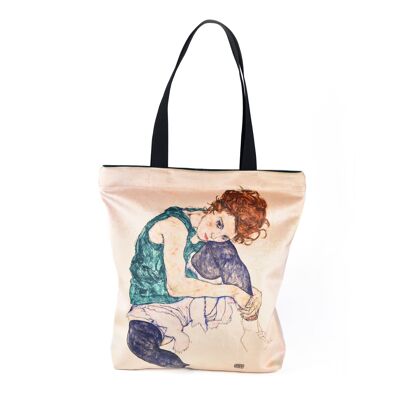


 <p>Take a piece of Munch’s raw emotion with you wherever you go with this bold tote bag, featuring the iconic intensity of <em data-end="164" data-start="152">The Scream</em></p> <p><strong>Artwork</strong><br>Edvard Munch<br>The Scream<br>1893<br><br><strong>Dimensions<br></strong>15" x 17.5"<br>38 cm x 44 cm<br><br>Material: Canvas<br>Care instruction: Washable. Dry flat. <br><br></p> <p><strong>About<span> </span><em>The Scream<br></em></strong>One of the most iconic images of western art,<span> </span><em>The Scream</em><span> </span>was created by Norwegian artist Edvard Munch in 1893. The agonized face in the painting has become a symbol of anxiety of the human condition. </p> <p>There are four versions of this work (two in paint and two in pastels). The two painted versions have been stolen, only to be recovered later on. </p> <p>In his diary, Munch wrote:</p> <p>“One evening I was walking along a path, the city was on one side and the fjord below. I felt tired and ill. I stopped and looked out over the fjord—the sun was setting, and the clouds turning blood red. I sensed a scream passing through nature; it seemed to me that I heard the scream. I painted this picture, painted the clouds as actual blood. The color shrieked. This became <em>The Scream</em>.”</p> <p><strong>About Edvard Munch</strong><span> </span><br><span>Edvard Munch (born December 12, 1863, Löten, Norway—died January 23, 1944, Ekely, near Oslo) was a Norwegian painter and printmaker whose intensely evocative treatment of psychological themes built upon some of the main tenets of late 19th-century Symbolism and greatly influenced German Expressionism in the early 20th century. His painting</span><em>The Scream</em><span></span><span>(1893), can be seen as a symbol of modern spiritual anguish.</span></p>


















